One of the most famous structures in Jaipur is the Hawa Mahal. This building was built as a royal palace for the Maharaja of Jaipur and his family. It is located at a central point in the city, with views of both the Jantar Mantar observatory on one side and the City Palace on the other. The beauty of this building is that it is constructed entirely from intricately carved yellow sandstone panels which give it a captivating look during both day and night. This Mahal was built to allow the royal women to watch festivals on the street without being seen by the public.
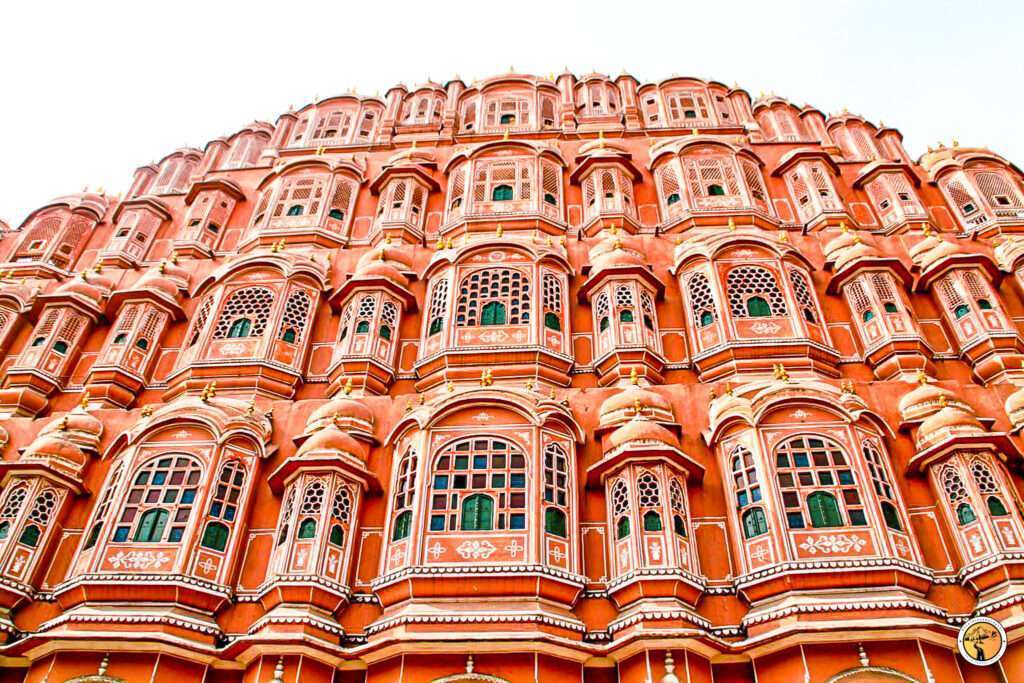
The facade and Architectural features of Hawa Mahal:
Hawa Mahal is a fusion of Hindu Rajput culture and Islamic Mughal Culture. The Hawa Mahal, stands for a “Palace of Winds”. The Mahal has numerous windows called Jharokhas which allowing cool breeze to circulate, thereby creating a Venturi effect. Since Jaipur is very close to a desert, this design is pivotal to ensure that the palace is not stifling in summer.
The Mahal is built entirely in red and pink sandstone, which glows with a pink hue in the sunlight. The Hawa Mahal is often identified as the world’s tallest building constructed without a foundation.
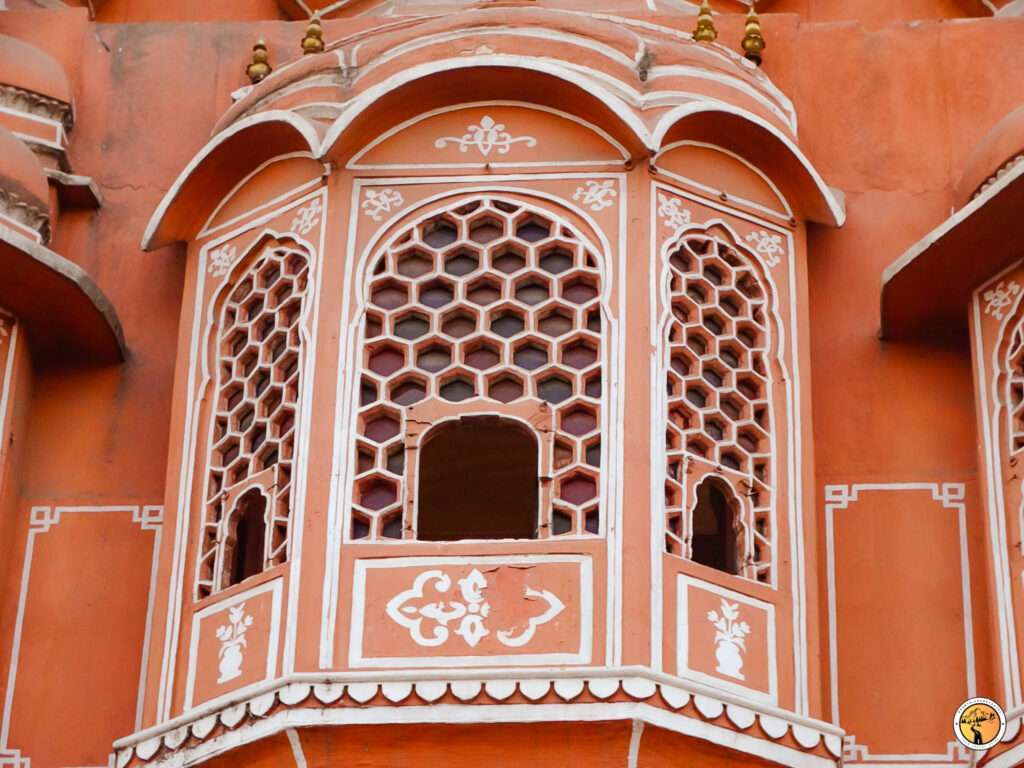
Design of Hawa Mahal:
Hawa Mahal has 5 floors.
First Floor:
The first floor is called Sharad Mandir – Sharad translates to “Autumn” in Hindi and Sanskrit. This floor was used to host these festivities in Autumn and hence the name. There is a big fountain in the middle of this floor.
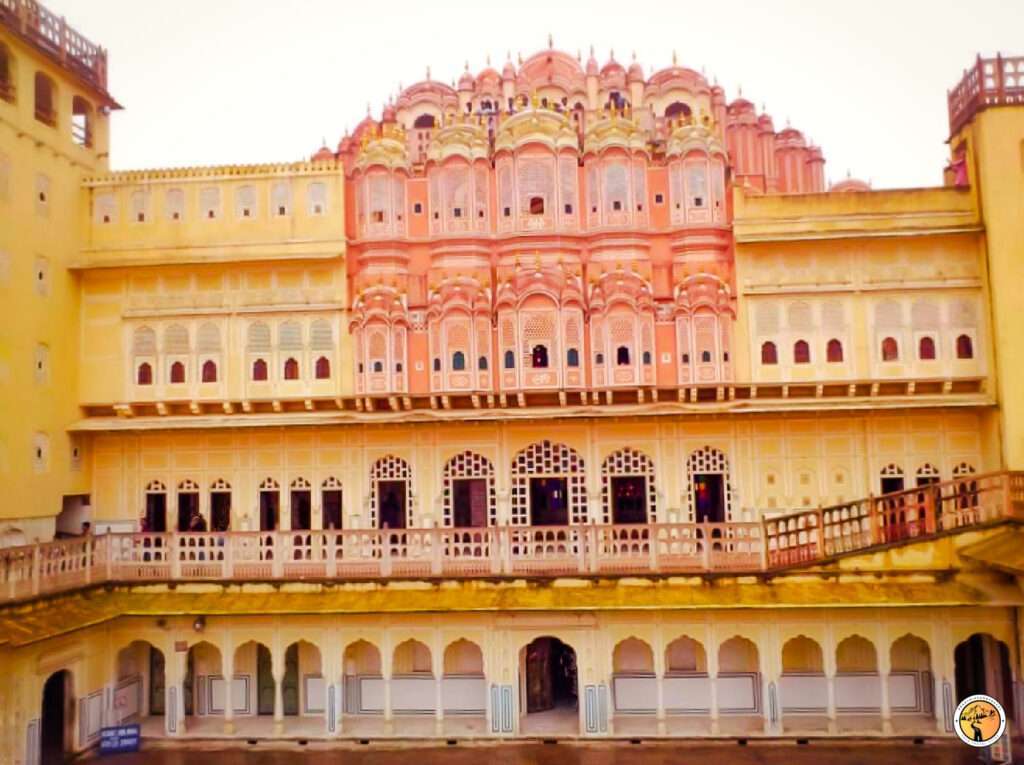
Second Floor:
The second level is called Ratan Mandir – Ratan translates to “precious stones”. This floor has stained glass covering the door arches and widows which gives a colourful look to the walls.
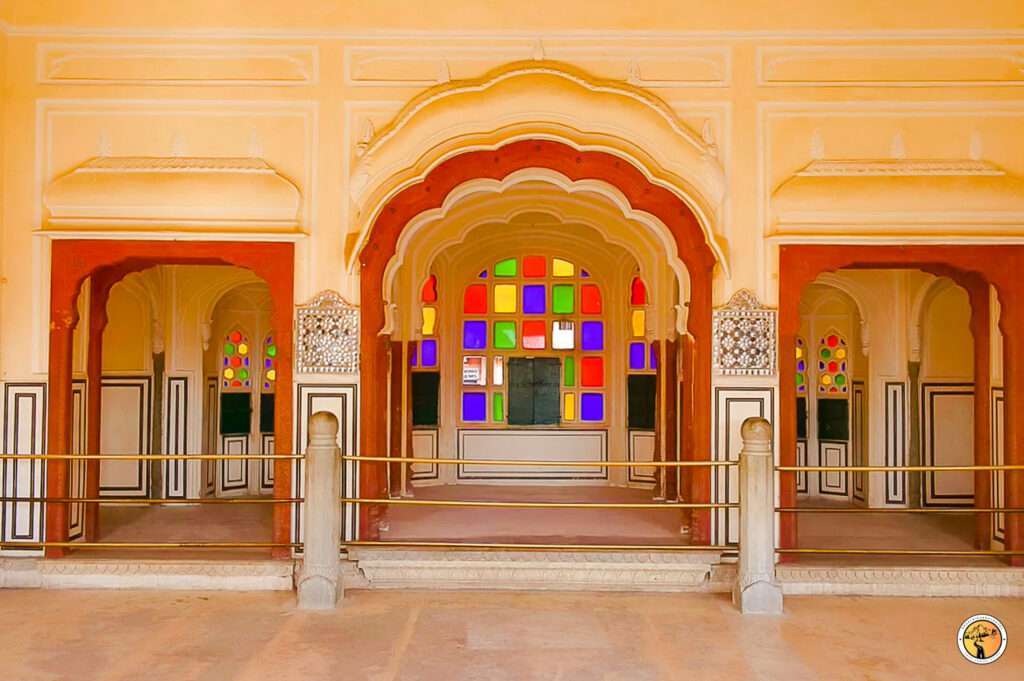
Third Floor:
The third floor is called Vichitra Mandir – Vichitra roughly translates to “Quaint” or “Bizzare”. Historians says that this is the place where the King spends time in solitude, away from all the commotions of the royal life. This is also the place where the King offers his prayers to lord Krishna.
Fourth Floor:
The fourth floor is called Prakash Mandir – Prakash translates to Light.

Fifth Floor:
The fifth and final floor is called Hawa Mandir – Hawa translates to “Wind” and being the Top floor, this is the most windy and coolest part of the Palace.
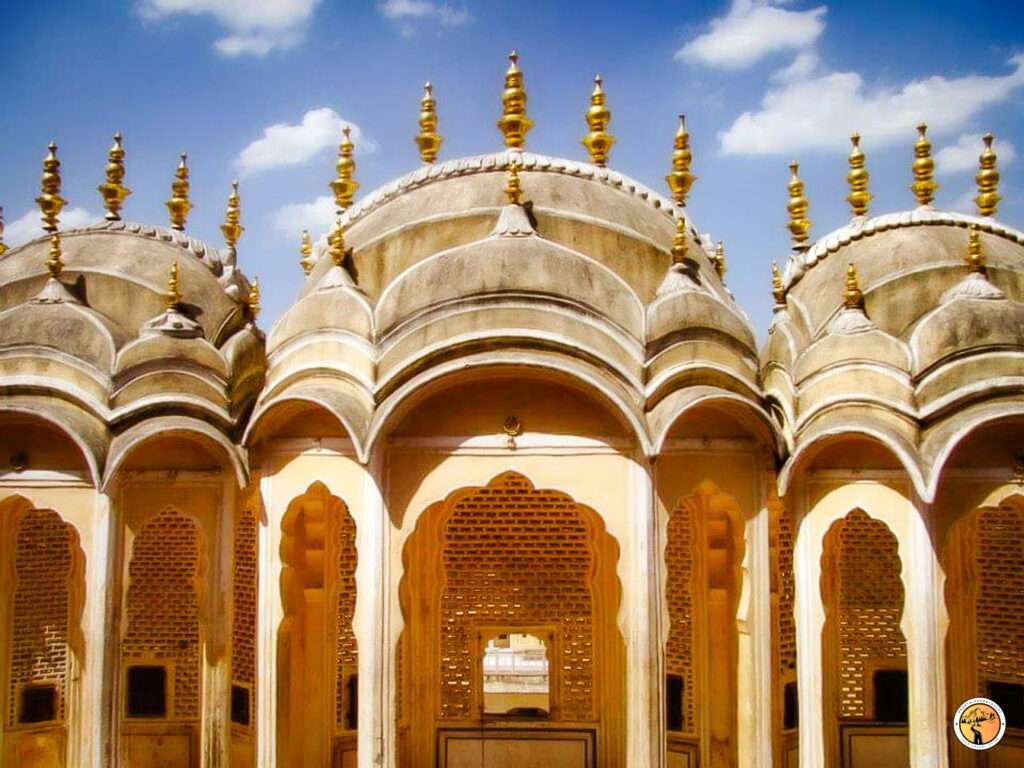
Information about Hawa Mahal:
Address:
Hawa Mahal Rd, Badi Choupad, J.D.A. Market, Pink City, Jaipur, Rajasthan 302002, India
Location:
Hawa Mahal is located at the Centre of Jaipur City. It’s a few minutes’ walk from the City Palace and the Jantar Mantar observatory. Amber Fort (Amer Fort) is a short 30 minute drive.
How to get to Hawa Mahal:
From Jaipur International Airport:
The driving distance by road from Jaipur International Airport to Hawa Mahal is about 12.1km/7.5mi and it takes approximately 30 mins from Jaipur airport to Hawa Mahal.
From Jaipur Railway Station (JP):
The driving from Jaipur Railway Station to Hawa Mahal is about 4.9km/3mi and it takes approximately 15 mins from Jaipur Railway Station to Hawa Mahal depending on the traffic.
Hours of Entry:
9AM – 5PM
Admission fee:
For Citizens of India – INR 50, For Foreigners – INR 200. (Prices are adjusted for Inflation and updated periodically. Hours of Admission vary seasonally too. So it is always a good idea to verify the admission fee and hours of entry on the official website.)
Official website:
https://www.tourism.rajasthan.gov.in/ (You can buy online tickets from this website)
Interesting Facts
- A unique feature of Hawa Mahal is that it does not stand on a foundation. This is the tallest such building in the world. Since there is no foundation, the structure stands at a leaning position at 87 degrees.
- Another interesting feature about the architecture is that though five-storied, there are no stairs to reach the floors but only ramps.
- There are 953 ‘jharokhas’ or windows which allow the air to circulate the palace and keep it fresh and breezy in the sweltering summers. The cooling effect is also enhanced by the Fountains present at the centre of each of the chambers.
- Hawa Mahal was designed by Lal Chand Usta and commissioned by Maharaja Sawai Pratap Singh and it was completed in 1799.
Things to do at Hawa Mahal:
- Admire the architecture, which is fantastic. The Arches, filigree work, motifs, fluted pillars, canopies and jhorkhas are intricately designed and reflect the fusion of the Rajput and Mughal style.
- Explore the Mahal and its many floors. Each floor – namely Sharad Mandir, Ratan Mandir, Vichitra Mandir, Prakash Mandir and Hawa Mandir – has its own flavor.
- Check out the museum inside the Mahal which has weapons, antiques, paintings, and several other items that once belonged to the Rajput rulers.
Travel Tips:
- It is advisable to hire a local guide to Hawa Mahal. Another option is to get an audio guide. Having a guide will give you a very good understanding of the structure of the fort and also provide interesting anecdotes from history.
- If you are traveling in summer, always carry hats/scarves/umbrellas and sunscreen to keep the scorching sun away. Drink lots of water and be hydrated.
- You will find a lot of stray monkeys in most parts of Jaipur (particularly near the temple and lake areas). Avoid carrying food or drinks in your hand, and keep your cameras, phones, and other personal items safe.
- Wear comfortable shoes as there will be a lot of walking inside the Fort.
- Visit on a weekday rather than the weekend, if you want to deal with lesser crowds.
- The best time of the year to visit Hawa Mahal is November-February, when the weather is considerably cooler.
Nearby Attractions:
- City Palace
- Amer Fort
- Jantar Mantar
- Jaigarh Fort
- Nahargarh Fort
- Jal Mahal
Shopping in Jaipur’s Vibrant Bazars:
Jaipur is one of the most popular shopping destinations in India. Traditional Jewelry, Ethnic Handlooms & textiles, leather goods, handicrafts, souvenirs and other exotic artifacts draw tourists from all over the world to Jaipur. Check out the link below for more information on some of the most famous bazars in Jaipur.
Where to Stay and Dine in Jaipur?
If you want to treat your taste buds to a unique culinary experience and make your stay memorable, then check out these fabulous options on where to dine and stay in Jaipur.
Conclusion:
Hawa Mahal has a very unique design and after visiting, we felt that none of the palaces we had seen comes close to this one. Our only regret was not watching the sunset here. There are many places to visit in and around the Hawa Mahal, so plan at least 3-4 days for your Jaipur visit.
Happy Travels!

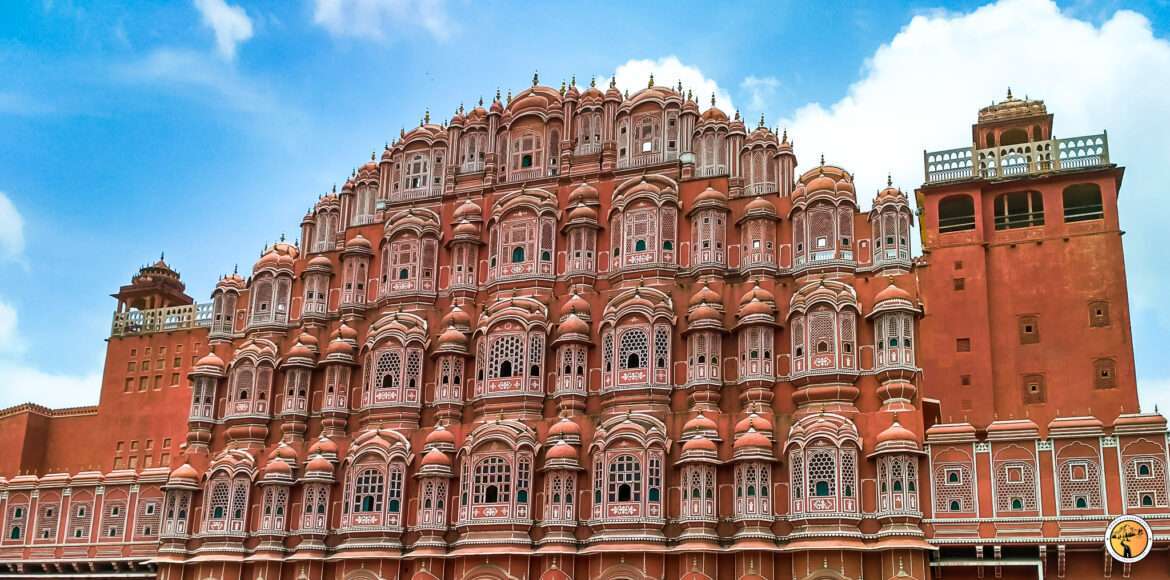
Leave a Reply